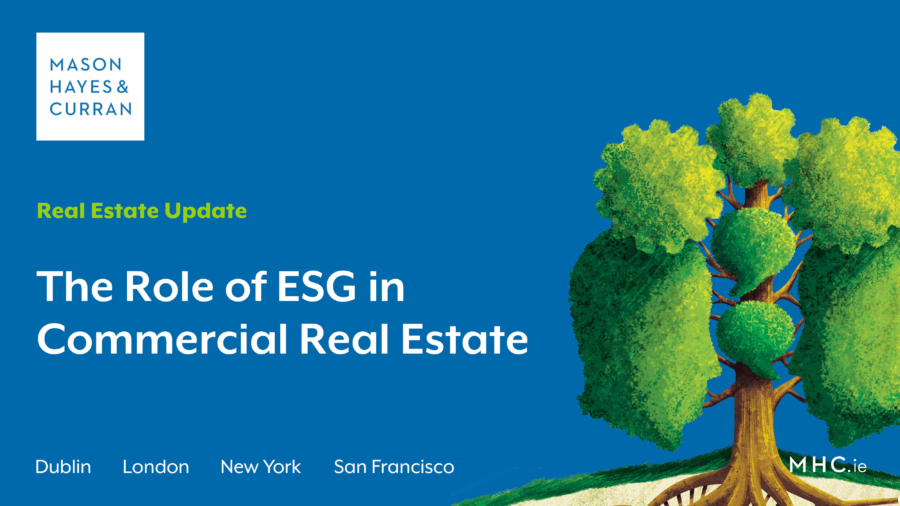
Environmental, Social and Governance (ESG) criteria are perhaps most familiar as a general lens for sustainable and socially conscious lending or investment. However, ESG also has specific relevance in the built environment sector.
This is especially so as the sector’s ESG impacts are substantial. Buildings and construction account for 39% of greenhouse gas (GHG) emissions globally, with 28% attributable to the day-to-day operation of buildings alone. Buildings also impact the health and well-being of their occupants and the communities within which they are embedded and the customers of the businesses based in those buildings. Pursuing positive impacts in this space can create value and attract ESG-conscious investors, tenants, and occupants.
While historically, meeting ESG requirements might have been seen as a nice to have, given the strict ESG requirements that many organisations now have and changing government policy it will need to be treated as a priority going forward.
When looking at buildings, new-builds and existing buildings bring their own unique challenges and opportunities to meet ESG criteria.
New-build projects
Developers can distinguish their new-build projects in the real estate market using a range of tools to achieve, demonstrate and certify ESG performance.
Voluntary sustainability certification schemes, such as LEED, will be especially familiar to built environment sector participants. In addition to energy performance, these schemes increasingly account for systemic and contextual sustainability metrics. These include buildings’ connection with sustainable transport infrastructure and the GHG emissions attributable to their construction, or “embodied carbon”. The latter is increasingly measured using standardised tools such as the Embodied Carbon in Construction Calculator, or “EC3”.
Similar tools are less well known but also available for buildings’ social, health and well-being impacts. The WELL building standard is becoming widely recognised and accounts for diverse factors impacting the health and holistic well-being of occupants. Particularly in a digitalised economy with flexible work arrangements, occupant-centric design can be a significant value driver for commercial real estate.
Questions of corporate governance—the “G” in ESG—do not always fall squarely within the scope of property transactions. However, responsible governance is essential for collecting and reporting reliable data on ESG performance. Frameworks such as GRESB’s can help standardise and validate such reporting. This allows asset managers to identify and invest in genuine ESG-promoting real estate assets.
Existing buildings
Certification schemes are also applicable to the occupation, upgrading and fitting out of existing buildings. Tools such as the Arc Platform can also measure and certify the actual environmental performance of a building as occupied, rather than its theoretical design performance.
Landlords and tenants can harness tools to engage in ESG-related collaboration for existing commercial premises. As we have discussed previously, green leases can facilitate varying levels of commitment towards data sharing and sustainable occupation and alteration of premises. While currently less prominent in the industry, we also anticipate that analogous approaches will be increasingly common for promoting or improving occupant well-being and other social impacts.
A challenge in this area is that it can be impractical or undesirable to make certain parties liable for improvements, whether directly or indirectly. The market trend, however, is for a significantly increasing standard of commercial premises. In certain circumstances, landlords and tenants might view improvements as necessary to futureproof the value and viability of premises. Green leases and similar tools can accordingly be used to calibrate parties’ ESG commitments proportionately and pragmatically.
Conclusion
There are a range of important ESG considerations for developers, landlords and tenants of commercial property, both in executing transactions and in reporting and communicating ESG credentials.
It is worthwhile for sector participants to be strategic about ESG. There are opportunities for the built environment sector to excel in meeting ESG criteria, particularly given Ireland’s high-quality domestic building standards and practices, well-connected and serviced premises, and reliance on high-spec building systems and renewable energy. These factors can be leveraged to attract potential occupants and investors seeking ESG-promoting assets.
Our Real Estate team can help advise and answer queries on these and other ESG matters in the sector.
The content of this article is provided for information purposes only and does not constitute legal or other advice.
Share this:






